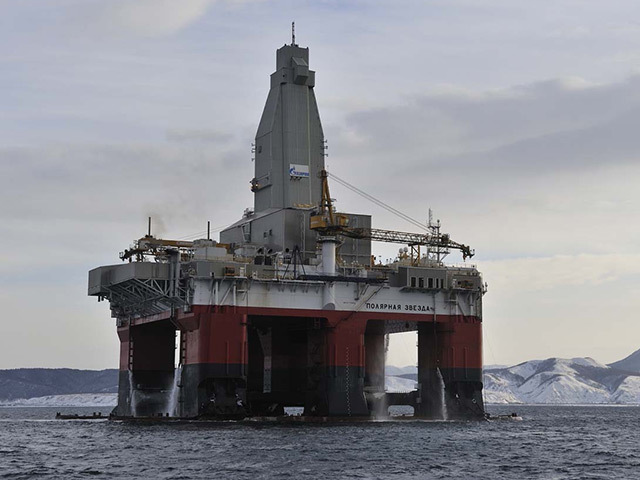
First gas from the Kirinskoye field in the Russian Far East might seem very remote to anyone working in the North Sea yet it ranks as one of the world’s most important subsea developments.
Last month Gazprom marked the occasion with an official ceremony at the Kirinskoye Onshore Processing Facility (OPF) marking both initial production and testing of its transmission system.
Kirinskoye lies 28km off the east side of Sakhalin Island, in the Sea of Okhotsk. The water depth is just 90m and would not justify a subsea approach in the North Sea. However, the ultra-hostile and seismically active environment dictated that subsea was the best approach and it was a first for Russia.
It was discovered in 1992 using the Korean rig Doo Sung and has reserves estimated at 137billion cubic metres of gas and 15.9million tonnes of retrievable condensate. Production is expected to optimise at around 5.5billion cu.m a year.
The development licence for Kirinskoye GCF was granted in 2008. However, intensive geological work was conducted between 2009 and 2011 before the development plan was finalised.
It was to be based on six wells, gathering manifold and a 28km export line to the onshore processing facility. Exported gas and liquids would be conditioned at the OPF prior to the gas being transported through a 139km pipeline to the main compressor station of the Sakhalin-Khabarovsk-Vladivostok gas transmission system.
A pipeline for supplying monoethylene glycol from the coastline to the production site, and a control cable would be laid prior to the construction of the first well.
Drilling of the first production well started in August last year, while the exploration well that located the field was re-engineered as a producer using the Arctic class semi-submersible rig Polyarnaya Zvezda (Polar Star) which was contracted for the development drilling campaign together with a sister unit, the Severnoye Siyaniye (Northern Lights).
This sixth generation rig, owned by Gazprom, was built at the Vyborg shipyard and is regarded as cutting edge for Arctic operations.
The experience gained by Gazprom with Kirinskoye will be used for developing other Russian offshore fields.
Construction of the Kirinskoye GCF forms part of the large Sakhalin III project to supply gas for the Eastern Gas Programme which encompasses the eastern parts of Russia and Pacific Asia.
Sakhalin III comprises four blocks – Kirinski, Ayashsky and Vostochno-Odoptinsky, licensed to Gazprom, and the Veninsky block licensed to Rosneft. Gazprom’s blocks are expected to hold gross gas reserves of 1.4trillion cu.m.
Key contractors involved with Kirinskoye include:
- Saipem – engineering, procurement and installation of the subsea structures, survey works and installation of offshore pipelines.
- Saipem collaborated with Mezhregiontruboprovostroy (MRTS) for this work.
- Pacific Engineering Company (PECO) – geological surveys for designing the offshore production plant and the onshore technological facility.
- Geophysical Engineering Company – some offshore construction works and surveys for the onshore pipeline connecting the OPF to the main compressor station.
- TMK – offshore pipes
- FMC – subsea production tree, manifold, wellheads, choke and subsea control modules and multiphase meters
- Grenland – manifold, foundation and protection structures
Sakhalin III project will serve as the primary reservoir for the Sakhalin-Khabarovsk-Vladivostok gas transmission system, which will supply gas to the regions of Primorsky and Khabarovsk Krais, Jewish Autonomous Oblast and Sakhalin Oblast.